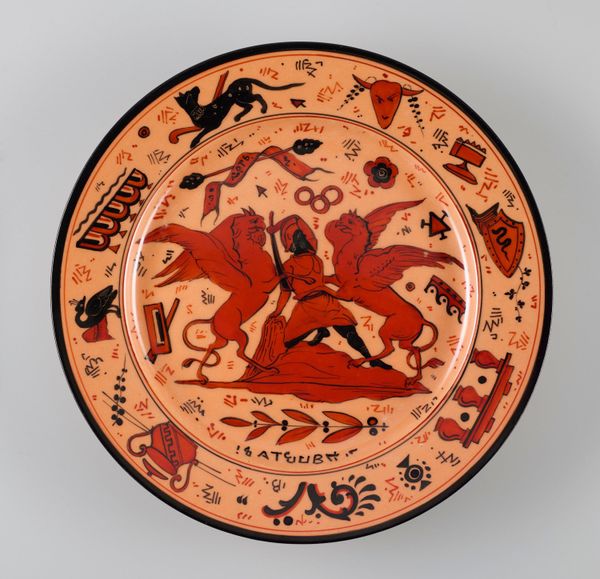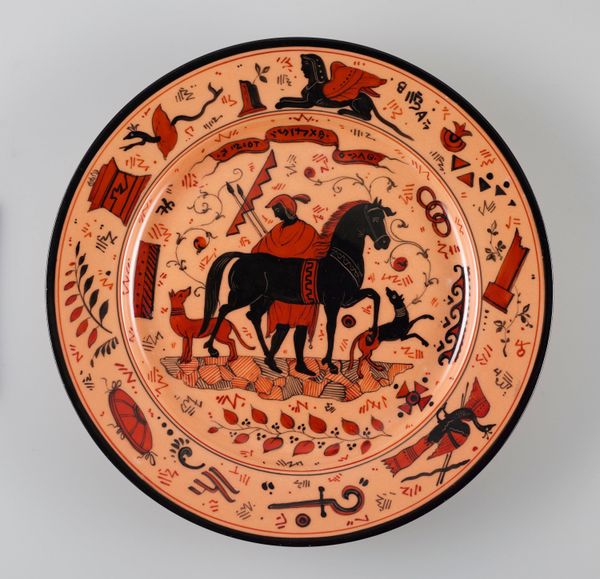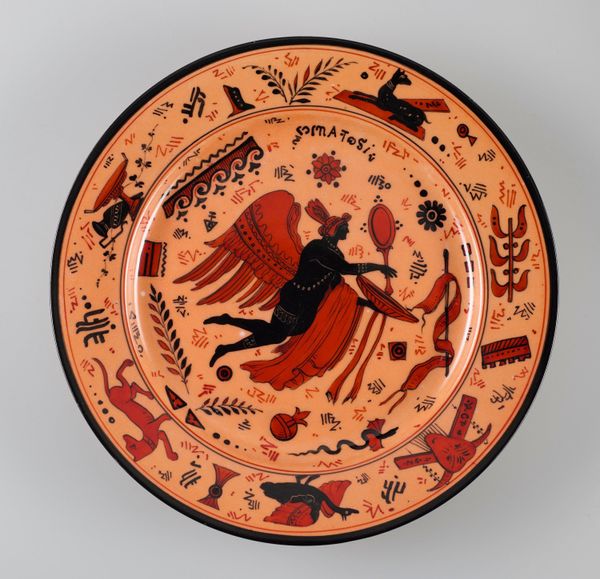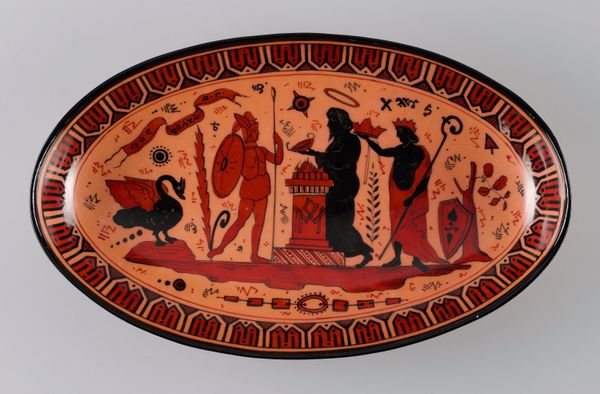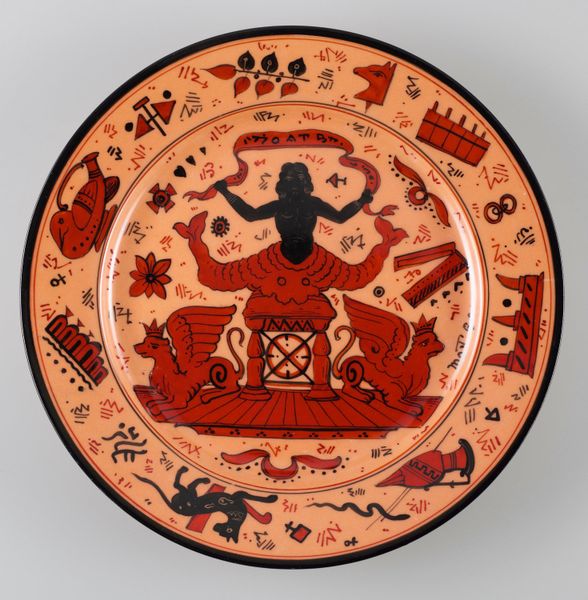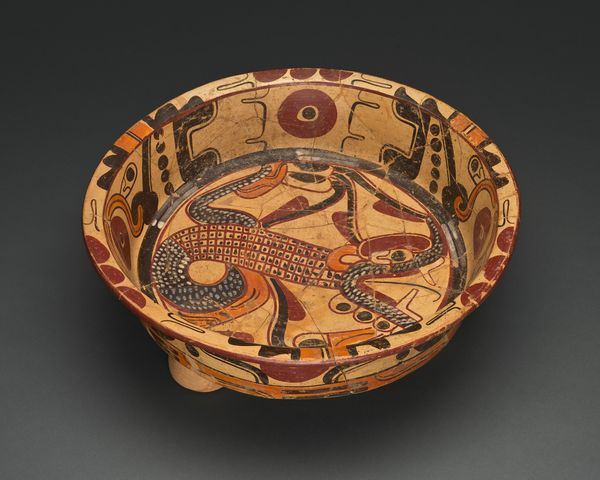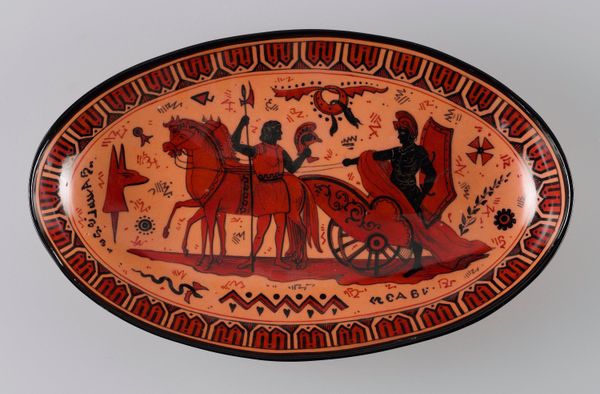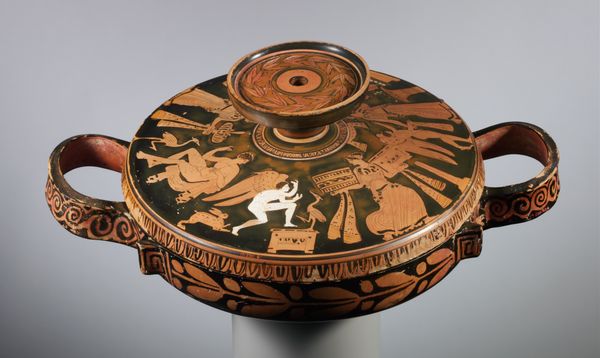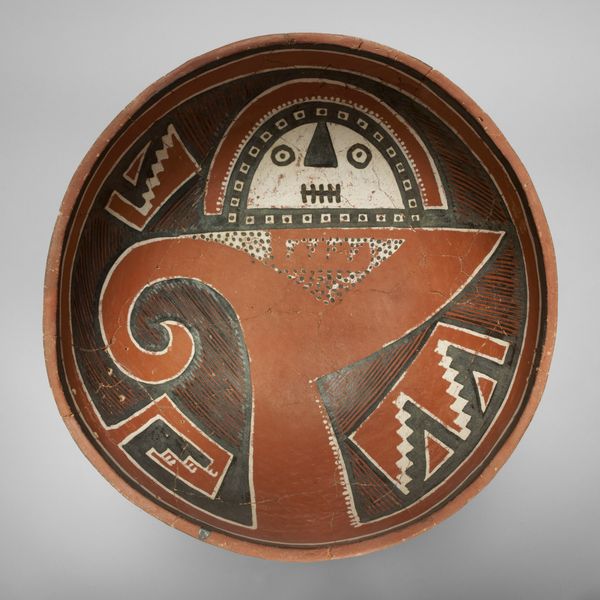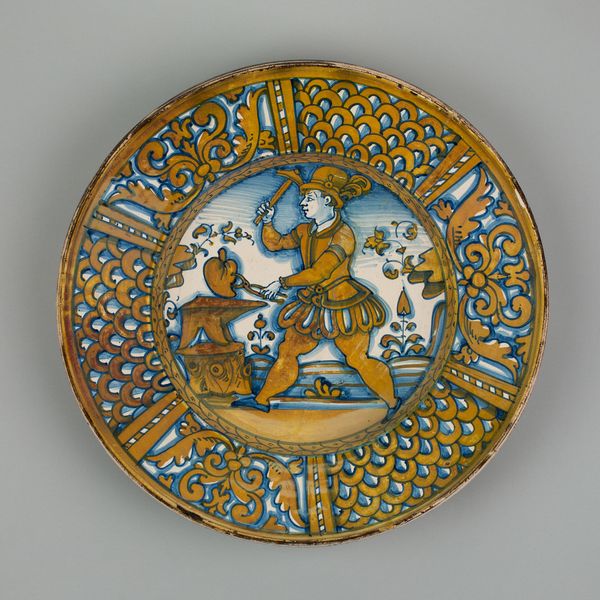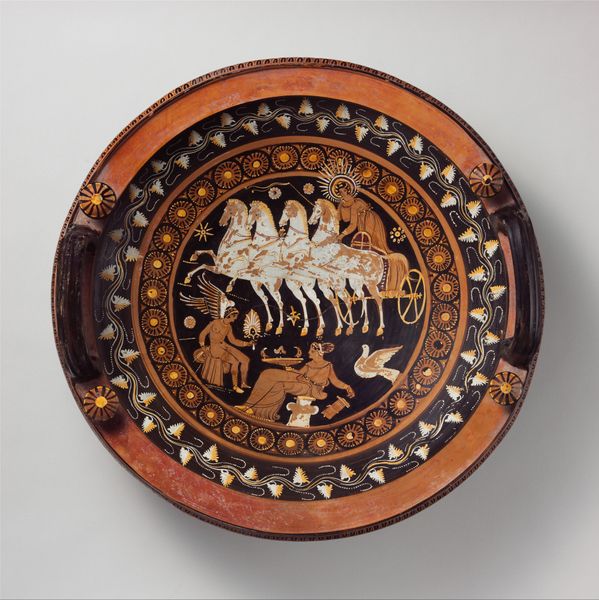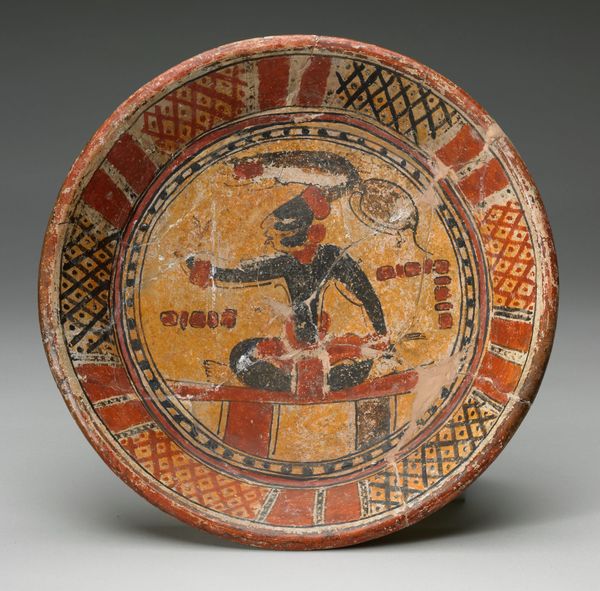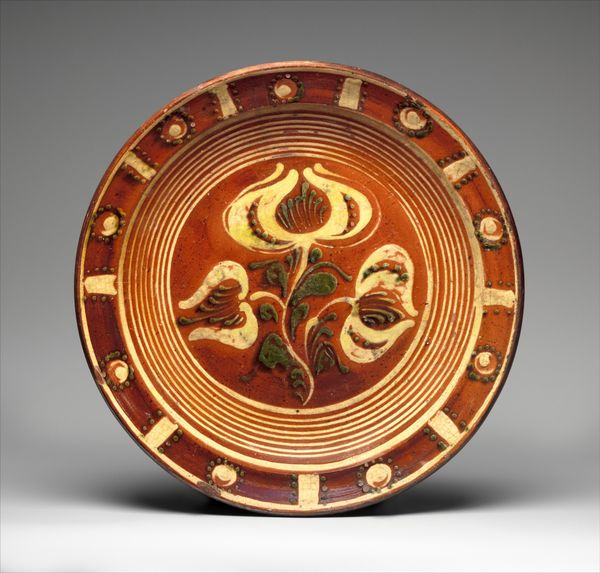
ceramic, porcelain
#
narrative-art
#
pottery
#
greek-and-roman-art
#
ceramic
#
porcelain
#
figuration
#
earthenware
#
history-painting
Dimensions: 7/8 x 8 1/8 x 8 1/8 in. (2.22 x 20.64 x 20.64 cm)
Copyright: Public Domain
Curator: This piece, titled "Plate from a Royal Berlin China Service," is estimated to originate around the 20th century. It's currently held here at the Minneapolis Institute of Art. The plate is ceramic, skillfully decorated in the style of ancient Greek pottery. Editor: Immediately striking! The red and black figures against the pale background create a dramatic, timeless scene. There's a deliberate stiffness in the figures that lends the piece a powerful presence, despite its seemingly utilitarian nature. Curator: Precisely. It speaks to the power of revival movements, specifically Neoclassicism. This piece reflects an era deeply engaged with antiquity, but how that engagement could often be filtered through the lens of elite power and display. The Berlin China Service, from which this plate originates, was designed for royalty, essentially utilizing a romanticized vision of the ancient world to communicate status and sophistication. Editor: It's fascinating to consider the politics of that image appropriation, using classical motifs to bolster royal power. What narrative is at play? We see what appears to be a warrior presenting offerings at an altar. It raises questions about who gets to interpret history, and how such interpretations reinforce social hierarchies. Curator: The choice of decorative elements underscores that point. Even seemingly innocuous details contribute to a specific narrative. The animal motifs, the geometric patterns, and even the arrangement of these elements communicate an idealized vision of the past, free of nuance and ready-made for consumption by a privileged class. We must ask, what did the revival of such ancient themes truly serve for the royal patrons of Berlin? Editor: It’s a potent reminder that even seemingly innocuous decorative arts carry the weight of history, power, and social significance. Looking at this piece forces us to grapple with those dynamics. Curator: I think studying the public function and the historical context are valuable ways to investigate power. Editor: And I wonder if we can ever fully dismantle those echoes when interacting with such objects today. It's something to keep interrogating, though.
Comments
No comments
Be the first to comment and join the conversation on the ultimate creative platform.
